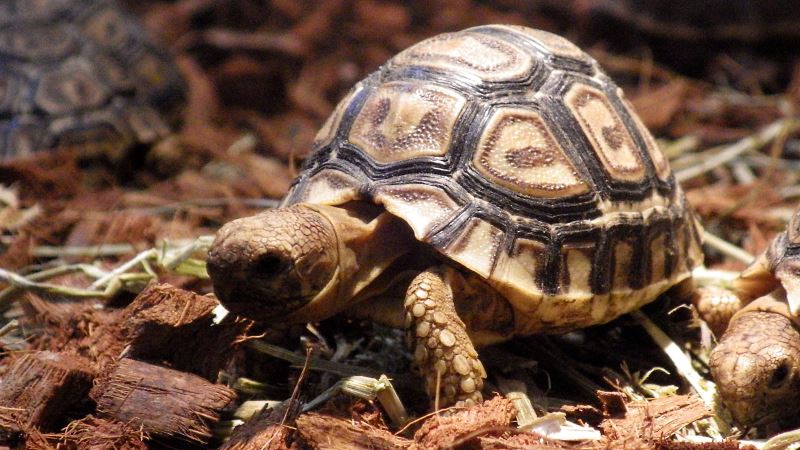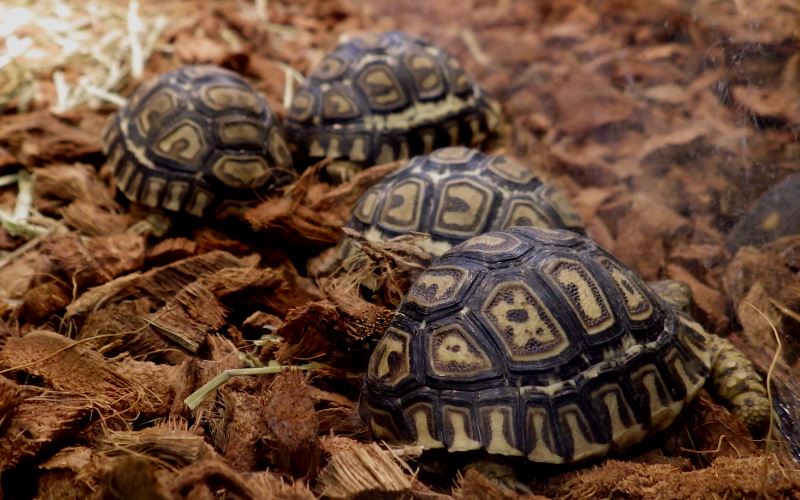The leopard tortoise is the second largest tortoise on the African savanna.
The only species of tortoise grazing the the African savanna that is even bigger than the leopard tortoise is the African spurred tortoise which appeared on this blog earlier. The leopard tortoise leads a lifestyle similar to that of the African spurred tortoise mainly grazing on relatively dry and fibery grasses in its arid environment.

Leopard tortoise (Stigmochelys pardalis) at the 2014 Canadian Reptile Breeders Expo.
The leopard tortoise (Stigmochelys pardalis formerly Geochelone pardalis) is often kept as a pet. Before you decide to get a leopard tortoise as a pet you have to be aware that they do grow very big and can reach about 2 feet in length and a 100 pounds although a full grown length of a foot and a half is more common with a weight of around 40 pounds — which is still a large tortoise to house and take care of.
Leopard tortoises are best kept in a pen outdoors if the temperature is sufficiently high to allow it. Leopard tortoises should be fed grasses with only occasional pieces of fruits and other soft watery plant food. Leopard tortoises should not be fed animal protein. Leopard tortoises are a dryland species and they can go for some time without water but doing so stresses their metabolism and in captivity proper care should include providing your leopard tortoise with drinking water and even occasionally spraying them with a hose to simulate a rain fall.
A lot of leopard tortoises in the pet trade are now captive bred and if you decide that a leopard tortoise is the kind of pet you want you should look for a captive bred one.



